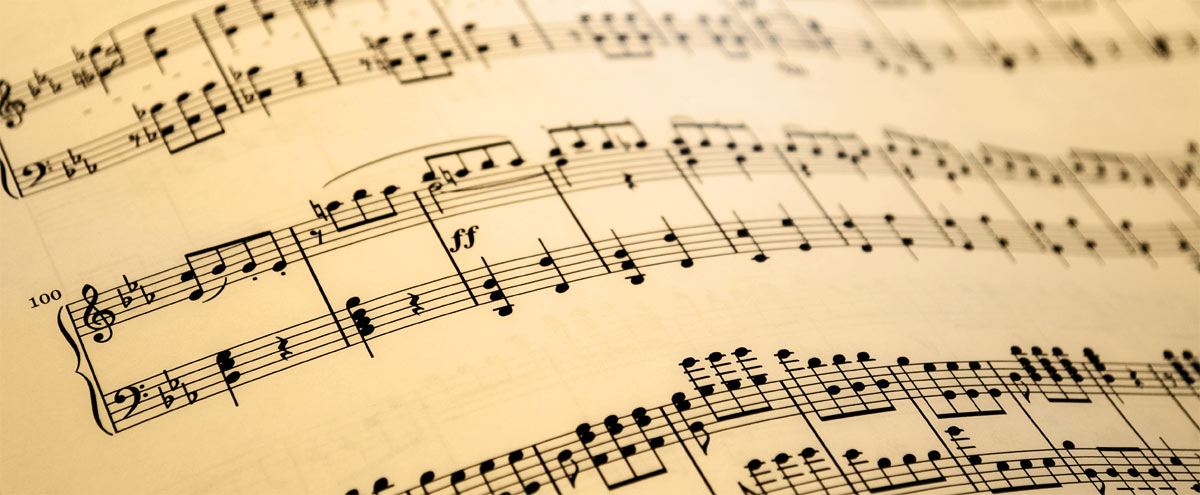Background
Anatomy of a Song
All popular music has structure that can be divided into formal sections that are put together in a particular sequence, and together describe the modular design of that musical piece. The composer has given these sequences, also called parts a name to make it possible to identify it, and enable the composer to order a multitude of them in time.
While classical compositions and some progressive form of music is mostly composed non-sectional and/or non-repetitive which is commonly called through-composed and means that the music is written in linear order and does not have structural elements that are repeated, popular and traditional music in contrast make use of sectional, repeating forms.
At Lead Vocals we use the most common names for this sequences to make the key passages of the structure visible, and to enable our users to jump into these passages with a mouse click. This enables the vocalist to repeat practice from a specific position within the song. Though musicians divide a music into even smaller pieces combining sections into parts, which is called lettering, we think of terms that describe the structure fitting to the point of view from the lyrics.
A common song structure is the verse-chorus form that includes formal passages named verse, chorus, and bridge. In pop and traditional forms of music composers oftentimes use these parts as foundation and surround them with an introduction and an outro, while repeating the middle in variations.

Sheet music documents the structure of a song.
Musical Components of a Song
In order to understand the definitions of the structural song elements listed below it is to mention that a song analyzed by musical components is made up of the following seven elements, as they have been defined by traditional musicological literature:
- Melody
Often played by a lead instrument or sung by the lead vocalist, the melody is considered a main identifier for a song. It consists of a single line of tones or notes that are heard as some sort of unit. - Harmony
The harmony of the song can be described as a series of chord progressions played by the accompanying musicians in contrast to the instruments playing the melody. A chord progression is a series of musical chords which share a root relationship based on a scale or group of pitches, in music theory also called the key. - Rhythm
The rhythm of a song is defined by the tempo and pulse the harmony of a song is played. It is including a song-specific accentuation of sounds over time. - Tone
Tone color, also called timbre, is the quality of a sound in terms of a fundamental frequency and its distribution of harmonics and overtones. - Form
The form is another term for the structure of a song or musical piece, and the main subject of this article. - Tempo
The tempo is simply the speed at which a specific section of the song, or the song as whole is measured, usually described in beats per minute. - Dynamics
The dynamics of a song refers to the volume of all the parts as a whole, and for each of the layers within the structure of a song, for the latter meaning it is created by each individual performer including the lead vocalist.
The Structural Elements of Music
So what structural elements does music have, and what do these elements contain?
- Intro (or Introduction)
- Pre-Verse
- Verse
- Verse Extension
- Interlude (or Link)
- Bridge
- Pre-Chorus
- Chorus
- Refrain
- Post-Chorus
- Hook
- Solo
- Collision
- Ad Lib
- Outro
- Parts

An analogy: Many different motions combined build the flight of this seagull.
^ Intro (or Introduction)
The intro, or introduction is placed at the beginning of a musical piece or song, and usually precedes the musical theme or lyrics with melodic, harmonic, or rhythmic materials that stand in relation to the body of the musical piece.
Sometimes an introduction may contain music or sounds that are out of context and for example used to set a specific mood or statement. If we think outside the terms of a popular song, we may find the introduction being an own piece of music in context to the following musical material, that has been put together in form of e.g. an album or a concert.
A working formula for a musical introduction in popular music may be the use of the last four or eight bars of a song, or a complete single chorus as is common with the twelve-bar blues. The general idea of an introduction is to build up suspense for the listener.
^ Pre-Verse
The pre-verse is an interlude meaning an intervening period of time placed between the introduction and the opening verse of a song. While today the pre-verse isn't used very often, it was a popular technique in the 1960's during the era of surf music, which derived from rock music and was associated with the surf culture most popular during 1962 to 1964.
^ Verse
When a song has two or more sections with almost identical music but different lyrics, each of those sections is called a verse. The lyrics may be continious, but more often may be devided in lines that rhyme in a specific pattern, per example the "AABB" or "ABAB" scheme. When a specific rhyme scheme is used, it is usually not changed.
The first verse of a song establishes the lyrical rhythm, the type of language, and the phrasing which is used throughout the song. The function of the verse is to provide a context or background information, which delivers the message of the song.
Lyrically the verse transports the story of a song containing events, images and emotions that a writer seeks to express. With each following verse the story or theme is developed a bit further. Musically and lyrically the verse is seen to support the chorus or refrain, meaning that it is intentionally stepping back a notch allowing the contrary part to stand out.
^ Verse Extension
A verse extension or post-verse is a specific type of bridge which is placed directly after a verse and usually differs melodically, harmonically, rhythmically and lyrically from verse and chorus. In addition changes in instrumentation, arrangement and production contribute to movement and flow through the song. Not all songs have a verse extension, but if they do it is usually kept quite short.
^ Interlude (or Link)
An interlude is a very short instrumental sequence that is placed with the intention to allow the lead vocalist to catch a breath. It usually re-uses a musical theme and feel taken from another part of the song.
^ Bridge
The term bridge was established in Germany in the 15th century, and pristinely defines a contrasting section of a song that prepares for the return of the original material or theme. Today the bridge just describes a general transitional section in a musical composition.
Different terms exist which define the placement of the bridge, like for example the verse extension behind the verse, the pre-chorus before the chorus, and the transitional bridge between verse and chorus. There is also a specialist type of bridge called the Middle-Eight, which refers to a length of 8 bars within a 32 bar long song pattern of the form "AABA" and which refers to the placement at "B" from the middle on. Some terms of bridges rather describe the emotion, like the climb, rise, or lift, and the channel.
Lyrically the bridge gives the listener time to reflect on earlier portions of the song, and may additionally prepare for the song climax. Sometimes bridges introduce basic ideas and concepts that link verse and chorus, and may change throughout the song to underline the feeling of movement. Changes in transitional bridges often retain some repetition from previous bridges.
Bridges usually are kept quite short and use subdominant or similar transitional harmonies from other sections. If verse and chorus have the same harmonic structure, the bridge section will introduce other harmonic patterns to break up those parts and keep the chorus fresh and interesting.
^ Pre-Chorus
The pre-chorus is an optional section that may be placed after a verse. It immediately preceeds the chorus and oftentimes includes a two or four line section, if not instrumental. Because of it's placement and function it is also referred to as transitional bridge and as channel or build. The pre-chorus is used to propel the listener, both melodically and lyrically, into the chorus.
If the first verse of a song is followed by a pre-chorus, it is likely that all following verses within that song will also include the pre-chorus section. If multiple pre-choruses exist within a song, they will usually consist of the same melody. The musical content of the pre-chorus is often defined by the use of subdominant or transitional harmonies. If verse and chorus involve in the same harmonic structure, the pre-chorus will introduce a new harmonic pattern to keep the reappearance of the verse harmonies used in the following chorus fresh and interesting.
Lyrically the pre-chorus might pick up one or more lines from the verse, or introduce a new lyric instead. If new lyrics are introduced, these will add a new dimension or a new perspective to the story, either by adding an element, changing the person or time, or switching from specific to general statements and vice versa.
^ Chorus
The chorus is a special type of refrain, that differs from the refrain by offering a distinct rhythm, melody, and intensity. It sometimes makes use of multiple voices in either instrumentation or vocals to increase upon its significance, and originally received its name from the use of added backing vocals as a method to thicken the theme. It is also longer than a refrain offering several lines of lyrics and having a length of at least 8 bars.
Musically the chorus is a section of a song that is repeated at least once, and that does not vary much in melody or lyric. It strives to be the most memorable element of a song and usually contains the hook, which is the main musical idea of the song. Lyrically the chorus often is a conclusion or a comment about the main topic, and often includes the song title.
^ Refrain
A refrain is a musical part that is repeated at several points throughout a song, containing title or main hook and expressing the main message of the song. Lyrically the refrain oftentimes includes only a couple of lines, repetitive words or phrases that extend the verse lyrics.
Musically the refrain is an extension of the verse that usually carries on the melody and rhythm of the verse, or includes it. The refrain is not a distinct section of the song; if it is it is called the chorus.
^ Post-Chorus
The post-chorus is a type of bridge that is placed immediately after a chorus and oftentimes is leading back to a verse. While the post-chorus musically may change chord structures it will try to maintain the same energy level as introduced with the chorus. A post-chorus may have lyrics or not. It also may include the function to lead into the verse, or to lead out of the chorus musically and/or lyrically.
^ Hook
Used mainly in popular music like e.g. pop, rock, hip hop, rhythm and blues, etc., the hook describes the musical idea of a song. The hook can be a riff, passage, or phrase which builds a melody or a rythm that most often incorporates the central theme of the musical piece. One important aspect of the hook is that it supports or compliments the emotional mood of a song.
A hook ideally should grab the listeners attention and transport your message through a driving, danceable rhythm, an easy to remember melody, and a lyric that promotes or defines an action, person, or place. The repetitive use of the hook throughout the song will further strengthen its ability to stand out and be easily remembered by the listener.
Hooks are in part genre dependent which means that they may work on different levels. In pop per example, hooks tend to be catchy in an instant, whereas e.g. in progressive rock a hook may be subtile and not easily understood by the listener. This is by design and leads to effects such as that you like a song more once you heard it multiple times. On the other hand a song with an easy to catch hook might decline in popularity faster. Hooks can be layered and implemented alongside which allows combinations of these effects.
^ Solo
The solo part of a song is in fact a bridge which contains an instrument playing a solo alongside accompaniment. It is designed to showcase a specific instrument, e.g. the guitar in rock music. Sometimes but more rare it may feature multiple instrumentalists.
A solo section may take place over the harmonics of verse, chorus, or bridge, and in popular music the solo instrument may take over the same melodies performed by the lead vocalist. Depending on genre solos may happen in company of standard solo backing progression, such as e.g. the 12-bar blues progression.
Solo sections will oftentimes make use of different chord progressions contrary to the rest of the song, to underline the difference between the bridge and the verse and chorus.
^ Collision
A collision is a section that combines different parts of music in an overlap with each other. This structural element is usually placed at the end of a song to create tension and drama, and is kept short. In songs that contain a bridge section held in Middle-Eight form a collision will usually combine melodic elements from that bridge with melodic elements from the pre-chorus.
^ Ad Lib
An Ad Lib section is a place within an outro of a song, that is dedicated to allow improvisation. In modern popular music the improvisation is made by the lead vocalist, who may break away from the established melody, rhythm, and tempo to add a difference and intensity to the ending of the song. Oftentimes the lead vocalist also takes the freedom to change up the lyrics e.g. to make a reference to the town of the audience, or to the event.
^ Outro
An outro may contain the closing lines for a song and sometimes includes a collision and an Ad Lib, or both. Additionally the outro may end in a Coda, which is an extra material that is completely unrelated to the melodic theme and that is ending the musical piece.
The intent of the outro is to end the song, for which the ending is also called conclusion. In produced music the outro sometimes is made through a fade-out. The term outro is used specifically in the realm of pop music.
^ Parts
At Lead Vocals we use the general term parts to describe a structural element that is not easily to be defined as one of the structural elements above, simply because the structure of the music or song is progressive and/or not repetitive.














